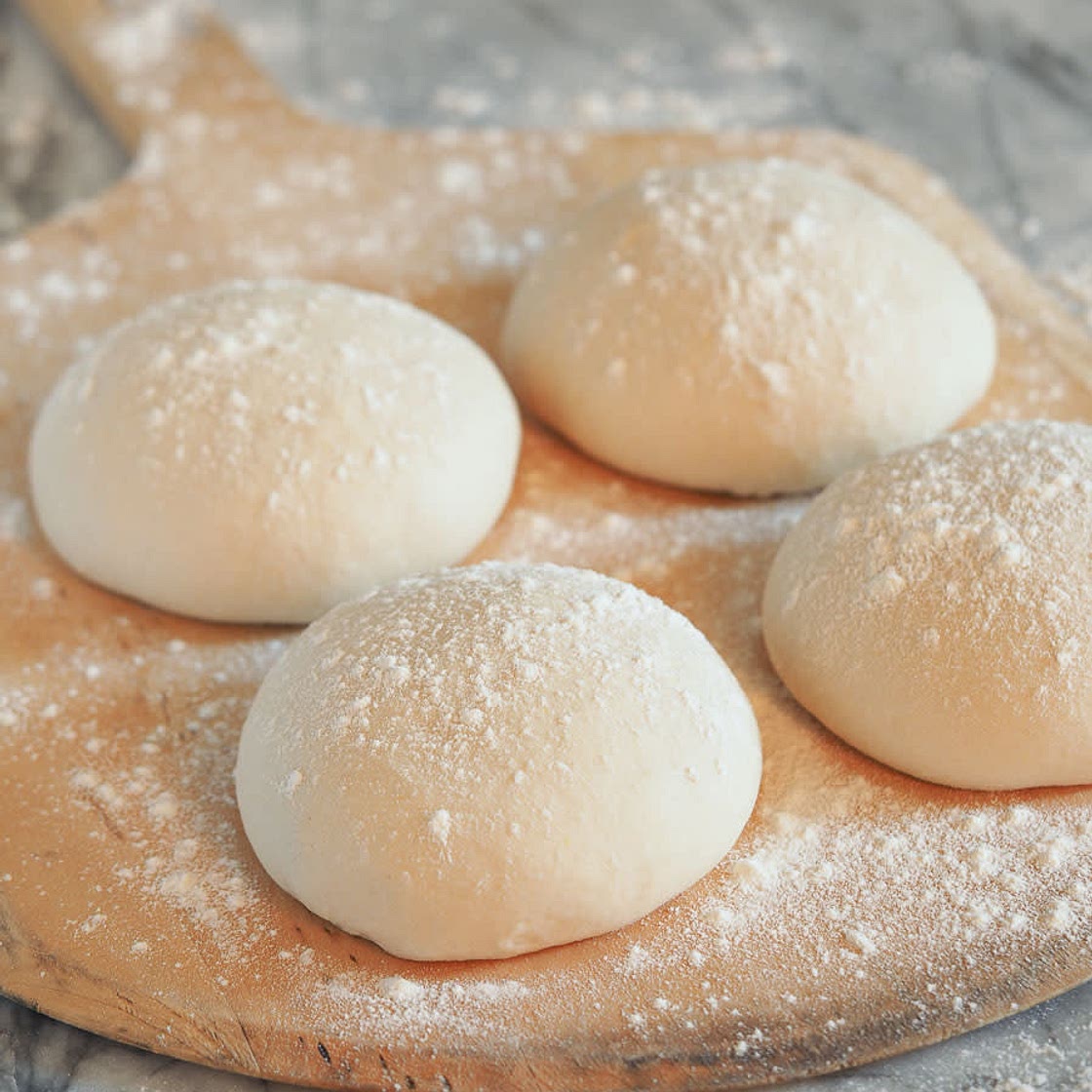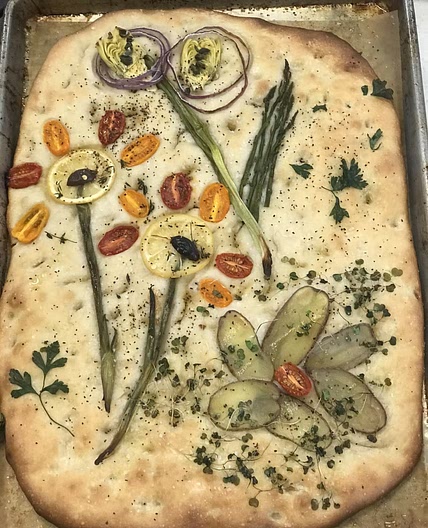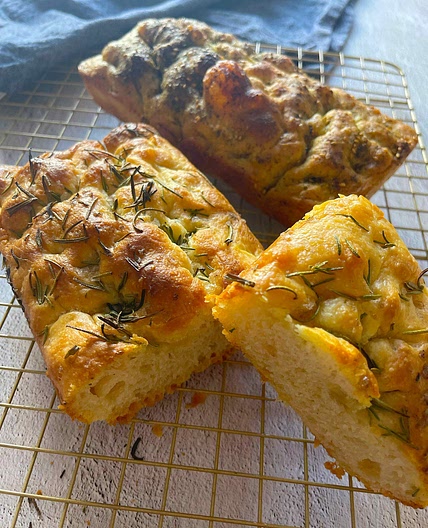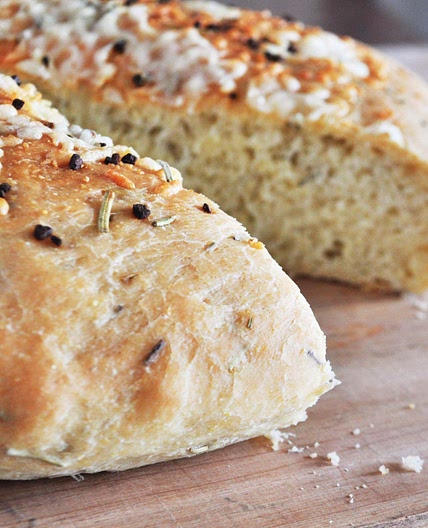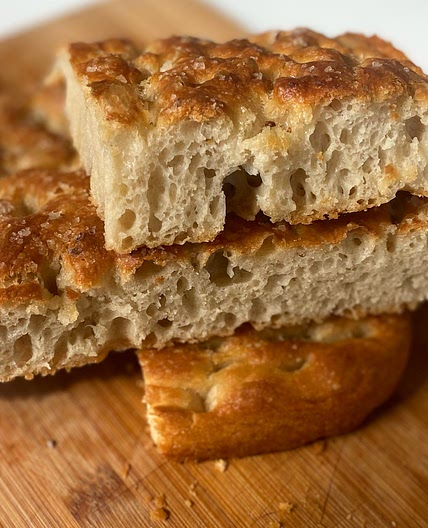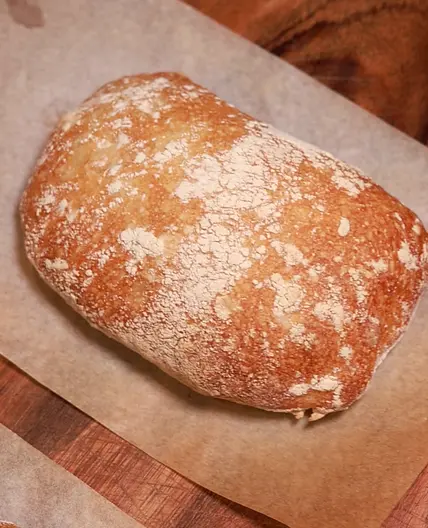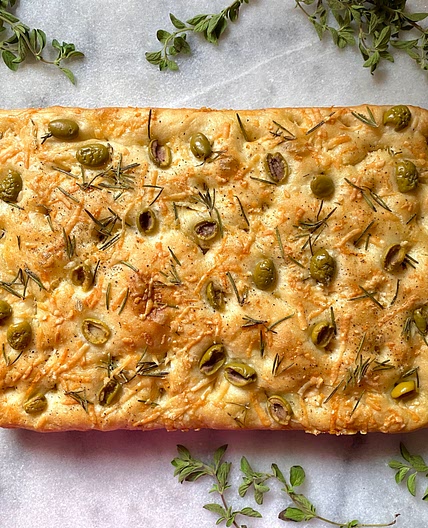By Tip S
Same-day Straight Pizza Dough
7 steps
Prep:8h
THIS RECIPE MAKES FIVE 340-GRAM DOUGH BALLS, each of which will yield a thin-crust pizza-stone pizza about 12 inches in diameter or a thick-crust iron-skillet pizza. If you use this dough for focaccia, reference portion notes or book for details on amounts of dough for different applications. BULK FERMENTATION: About 6 hours PROOF TIME: At least 1½ hours SAMPLE SCHEDULE: Mix at 10 a.m., shape into dough balls at 4 p.m., and make pizza anytime after 6 p.m. or anytime over the next 2 days.
PORTION NOTES For 2 thin or 1 fluffy pan focaccia crust: 300g flour, 210g water, 6g salt, 0.6g (0.15tsp) yeast.
This recipe is ideal if you want to make dough in the morning and bake pizza that evening. It’s even better if you refrigerate the dough balls overnight and make pizza the next day. What I often do with this recipe is make pizza two days in a row, or pizza one day, and the next day make focaccia, perhaps to serve alongside a meal, as a predinner snack, or for lunch.
Note that the dough doesn’t include olive oil, as pizza doughs often do. Therefore it bakes up crisper, with more open holes in the perimeter of the crust, which is how I like it. I do think drizzling olive oil on the dough after the pizza is baked is a great idea. The crust will showcase the flavor of the flour, so it’s best to use a good flour, preferably soft white 00 flour (see Pizza Dough Overview), Caputo brand if you can get it. If 00 flour isn’t available, use the best-quality all-purpose white flour you can obtain. The resulting flavors will be delicate, sweet wheat, and ideal for combining with high-quality tomatoes and toppings.
Updated at: Thu, 17 Aug 2023 11:35:26 GMT
Nutrition balance score
Unbalanced
Glycemic Index
75
High
Glycemic Load
116
High
Nutrition per serving
Calories731.4 kcal (37%)
Total Fat3 g (4%)
Carbs154.6 g (59%)
Sugars0 g (0%)
Protein21.8 g (44%)
Sodium1577.3 mg (79%)
Fiber0 (0%)
% Daily Values based on a 2,000 calorie diet
Ingredients
5 servings
Instructions
Step 1
1a. Hydrate the yeast: Measure 700 grams of water at 90°F to 95°F (32°C to 35°C) into a container. Put 2 grams (½ teaspoon) of yeast in a separate, small container. Add about 3 tablespoons of the 90°F to 95°F (32°C to 35°C) water to the yeast and set aside.
Step 2
1b. Autolyse: Combine the 1,000 grams of flour and the remaining 90°F to 95°F (32°C to 35°C) of water in a 12-quart round tub. Mix by hand just until incorporated. Cover and let rest for 20 to 30 minutes.
Step 3
2. Mix: Sprinkle the 20 grams of salt over the top of the dough. Stir the yeast mixture with your finger, then pour it over the dough. Use a small piece of the autolysed mixture to wipe the remaining yeast goop from its container, then throw it back in the tub. Mix by hand, wetting your working hand before mixing so the dough doesn’t stick to you. (It’s fine to rewet your hand three or four times while you mix.) Reach underneath the dough and grab about one-quarter of it. Gently stretch this section of dough and fold it over the top to the other side of the dough. Repeat three more times with the remaining dough, until the salt and yeast are fully enclosed. Use the pincer method alternating with folding the dough to fully integrate the ingredients. Cut and fold, cut and fold. The target dough temperature at end the of the mix is 77°F to 78°F (25°C to 26°C).
Step 4
3. Fold: This dough needs one fold (see Step 3: Fold the Dough for instructions). It’s best to apply the fold 30 to 60 minutes after mixing. After folding, lightly coat the dough and the bottom of the tub with olive oil to help prevent sticking. When the dough is about double its original volume, about 6 hours after mixing, it’s ready to be divided.
Step 5
4. Divide: Moderately flour a work surface about 2 feet wide. With floured hands, gently ease the dough out of the tub. With your hands still floured, pick up the dough and ease it back down onto the work surface in a somewhat even shape. Dust the entire top of the dough with flour, then cut it into 5 equal-size pieces with a dough knife or plastic dough scraper. Each piece should weigh about 340 grams; you can eyeball it or use a scale. (If you plan to use any of the dough for thin-crust iron-skillet pizza or focaccia, divide that portion of the dough into 200-gram pieces.)
Step 6
5. Shape the dough into balls: Shape each piece of dough into a medium-tight round following these instructions, working gently and being careful not to degas the dough.
Step 7
6. Refrigerate: Put the dough balls on a lightly floured baking sheet, leaving space between them to allow for expansion. Lightly oil or flour the tops, cover with plastic wrap, and let rest at room temperature for 30 to 60 minutes. Refrigerate for at least 30 minutes to make the dough easier to shape. See chapter 14 for instructions for shaping, topping, and baking pizzas. Stored in the refrigerator and tightly covered, any leftover dough will keep for up to 2 days. You may prefer the next-day dough as it develops flavors with more time in the refrigerator.
Notes
1 liked
0 disliked
There are no notes yet. Be the first to share your experience!
